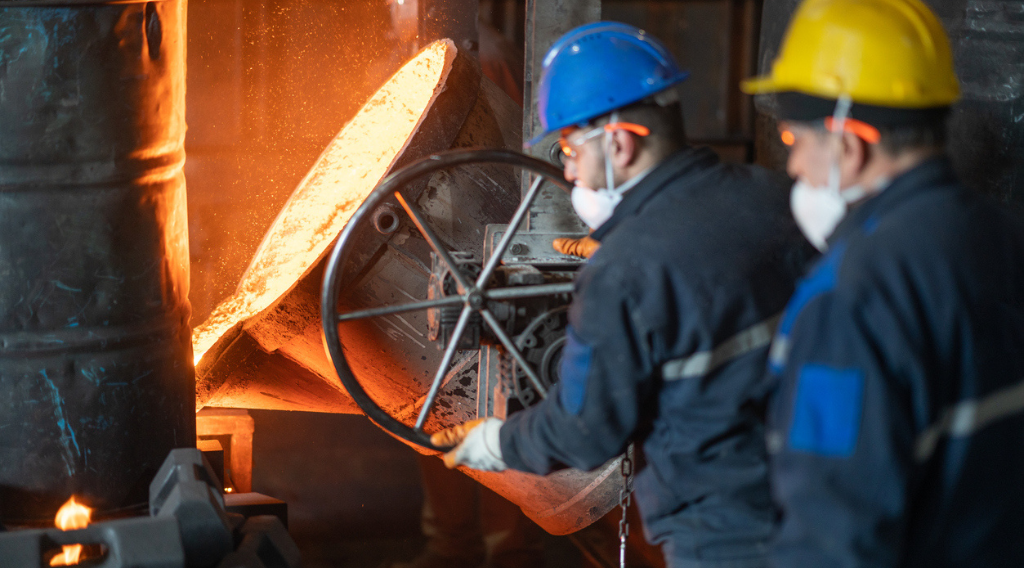The Section 45Q tax credit for carbon capture projects provides a foundational policy for increasing deployment of carbon capture projects in the US. This primer was prepared to provide a succinct overview of this important tax credit.
What is the Section 45Q Carbon Capture Tax Credit?
Section 45Q of the US tax code provides a performance-based tax credit for carbon capture projects that can be claimed when an eligible project has:
- securely stored the captured carbon dioxide (CO2) in geologic formations, such as oil fields and saline formations; or
- beneficially used captured CO2 or its precursor carbon monoxide (CO) as a feedstock to produce fuels, chemicals, and products such as concrete in a way that results in emissions reductions as defined by federal requirements.
Background: Bipartisan FUTURE Act Reforms 45Q
As part of the Bipartisan Budget Act of 2018, Congress passed legislation originally introduced as the FUTURE Act (Furthering carbon capture, Utilization, Technology, Underground storage, and Reduced Emissions) with broad bipartisan support to expand and reform 45Q.
Eligibility to Claim the 45Q Tax Credit
The party eligible to claim the tax credit is the owner of the capture equipment. That party must physically or contractually ensure the storage or utilization of the CO2 or CO and may elect to transfer the credit to another party that stores or puts the CO2 or CO to beneficial use. Annual carbon capture thresholds, as shown below, determine the eligibility of different types of facilities for the credit.


Why is the 45Q tax credit important?
The revamped federal 45Q tax credit provides a foundational policy for incentivizing carbon capture deployment in multiple industries, much like the role the federal production tax credit and investment tax credit has played in wind and solar development, respectively. To fulfill carbon capture’s full potential for reducing emissions, enhancing domestic energy and industrial production, and protecting and creating high-wage jobs, a suite of federal and state policies is ultimately required to complement 45Q and drive investment, innovation, and cost reductions sufficient to achieve economywide deployment (just as a full portfolio of federal and state policies has accomplished for wind and solar).
How does 45Q support carbon capture projects?
The expansion and reform of 45Q reduces the cost and risk to private capital of investing in the deployment of carbon capture technology across a range of industries, including electric power generation, ethanol and fertilizer production, natural gas processing, refining, chemicals production, and the manufacture of steel and cement.
Key Elements of the Reformed 45Q
The expansion and reform of 45Q provided important changes that will attract investment in projects.
CHANGE |
IMPORTANCE OF CARBON CAPTURE PROJECTS |
|---|---|
| Increases credit values. | Helps address the cost gap between carbon capture and transport costs and the amount that companies will pay for captured carbon in projects that store CO2 through EOR or reduce carbon emissions through other beneficial uses, while also providing an economic value for storage in saline formations. |
| Expands credit eligibility to include other beneficial uses of captured carbon (in addition to EOR), projects that capture CO and direct air capture projects. | Expands eligibility to a broader array of industries that can beneficially use captured carbon emissions, for CO capture in industrial applications, and for direct air capture technologies that capture CO2 from ambient air. |
| Provides greater financial certainty by lifting the credit cap and providing clear timing for eligibility. | Provides certainty that the credit will be available once the timeline and requirements are met to store and/or utilize the captured carbon. This improvement to the financial certainty of the credit is expected to catalyze significant investment in carbon capture projects. |
| Expands eligibility to more industries by lowering the annual carbon capture thresh-old and expanding definitions for qualified facilities and qualified carbon. | Supports investment in other industries where innovation is needed to reduce costs and achieve increased deployment. Many industry sectors have significant potential to deploy carbon capture and reduce their emissions but were precluded from claiming the original 45Q due to the eligibility requirements. |
| Enables the owner of the capture equipment to transfer the credit to another party that stores or puts the CO2 or CO to beneficial use. | Provides greater flexibility to determine which entity can use the tax credit, enabling different business models. It allows companies to participate that often cannot take advantage of traditional tax credits, such as tax-exempt cooperatives, municipal utilities, and many project developers. Companies without tax liability or insufficient tax liability to fully monetize the credit will now be able to use 45Q to help finance carbon capture projects. |
Learn about key changes that were made to 45Q with the passage of the FUTURE Act. Read our “Carbon Capture 101” to learn more about what carbon capture is and why it’s an essential economic and environmental strategy.



